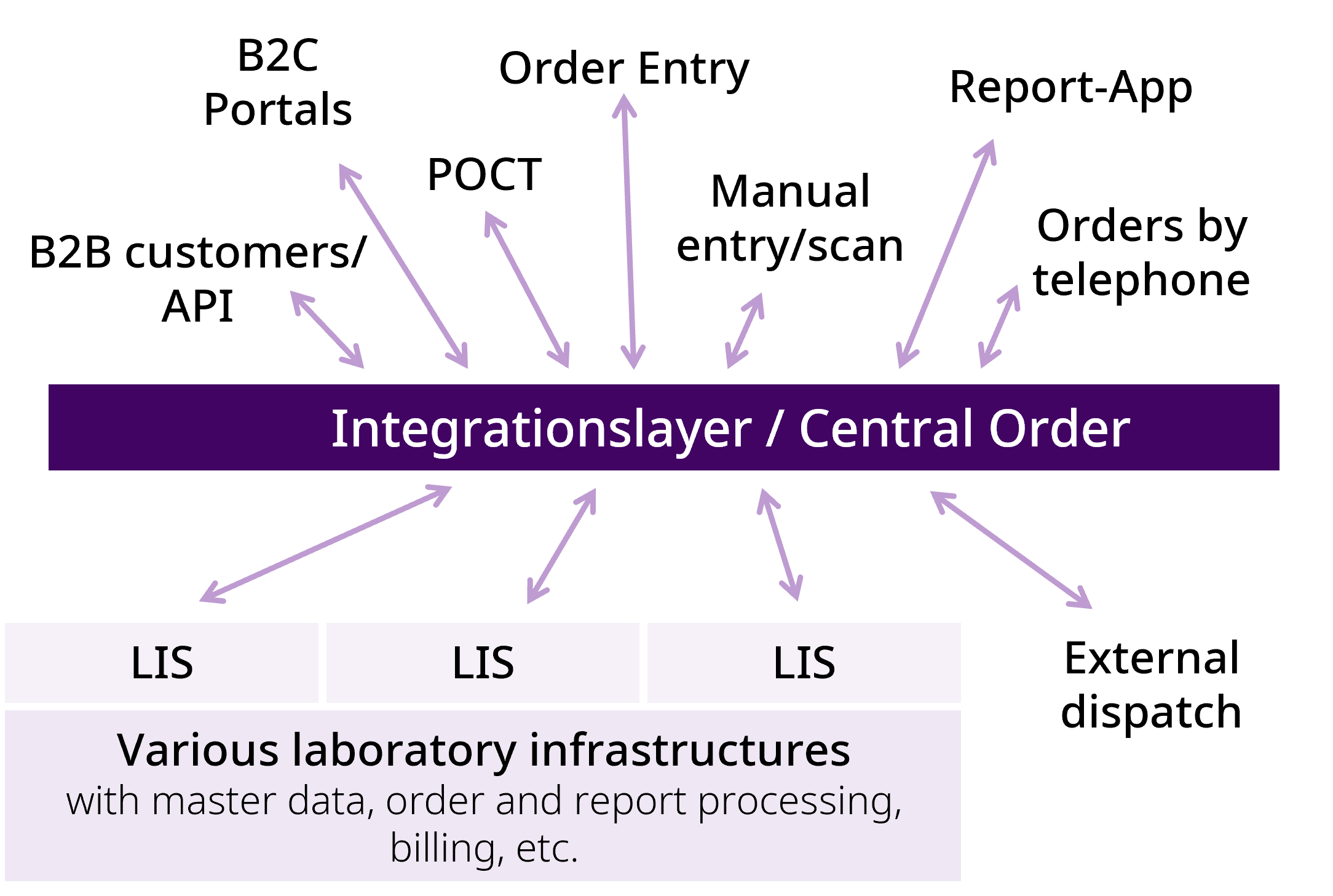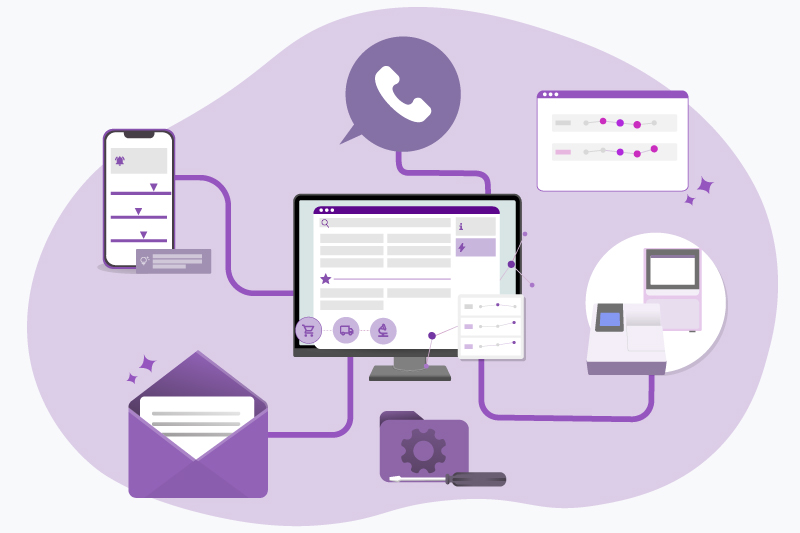Classic DFÜ systems (Datenfernübertragung, data remote transmission) have been used in laboratories and clinics for decades to manage lab orders and deliver results. They have proven their reliability and stability over the years. However, the parallel deployment of modern order-entry systems often creates redundant structures, as these newer systems typically also support the return transmission of laboratory results. This leads to unnecessary redundancy, increased maintenance efforts, and higher licensing costs.
Redundant Structures through Parallel Systems
A key issue with traditional DFÜ solutions lies in these redundant structures resulting from the simultaneous use of DFÜ and order-entry systems. Laboratory results are frequently processed or stored multiple times, significantly reducing efficiency. While established DFÜ systems are generally reliable and stable, the complexity of the IT landscape inevitably increases with each additional system.
Omni-Channel Approach as a Flexible Alternative
The way healthcare professionals communicate has evolved significantly. Similar to trends observed in e-commerce, doctors and clinics today expect flexibility across multiple communication channels—ranging from modern web portals and mobile applications to traditional methods like fax. A contemporary laboratory infrastructure must therefore reliably and centrally integrate this diversity of communication pathways.

The omni-channel approach addresses this requirement through a central platform connecting practice management systems (PVS), hospital information systems (KIS), communication solutions such as KIM, web portals, and mobile applications. This integration substantially reduces technical complexity by eliminating the need to maintain multiple point-to-point connections.
Event-Based Processing for Consistency and Reliability
A core advantage of an omni-channel solution is its event-driven architecture, ensuring consistent data processing. For example, if a lab report has already been reviewed in a practice, it will not reappear unnecessarily on a user’s mobile device. This event-driven principle ensures synchronization across all communication channels, especially important in complex scenarios involving large practices or hospital units with multiple users.
Moreover, event-driven systems enhance reliability by temporarily storing messages when individual channels are unavailable, preventing data loss. Comprehensive monitoring supports this by quickly identifying and addressing issues both within the laboratory and at connected healthcare providers.
Efficient Central Data Management and Standardization
Central management of data (patient information, doctor details, test catalogs, and results) on a shared platform reduces inconsistencies and redundancy significantly, thereby lowering development and operating costs in the long term.
A crucial step toward greater efficiency and interoperability is the consistent use of internationally recognized standards such as LOINC. medicalvalues actively supports laboratories in adopting these standards, ensuring seamless integration and communication across all channels.
Solutions such as the medicalvalues Client or the MIO Laboratory Results Solution provide future-oriented technologies that integrate smoothly into existing structures.
Conclusion
The omni-channel concept offers an efficient and flexible replacement for redundant DFÜ structures through a centralized integration platform. Laboratories and clinics can thus simplify, stabilize, and future-proof their communication processes effectively.


